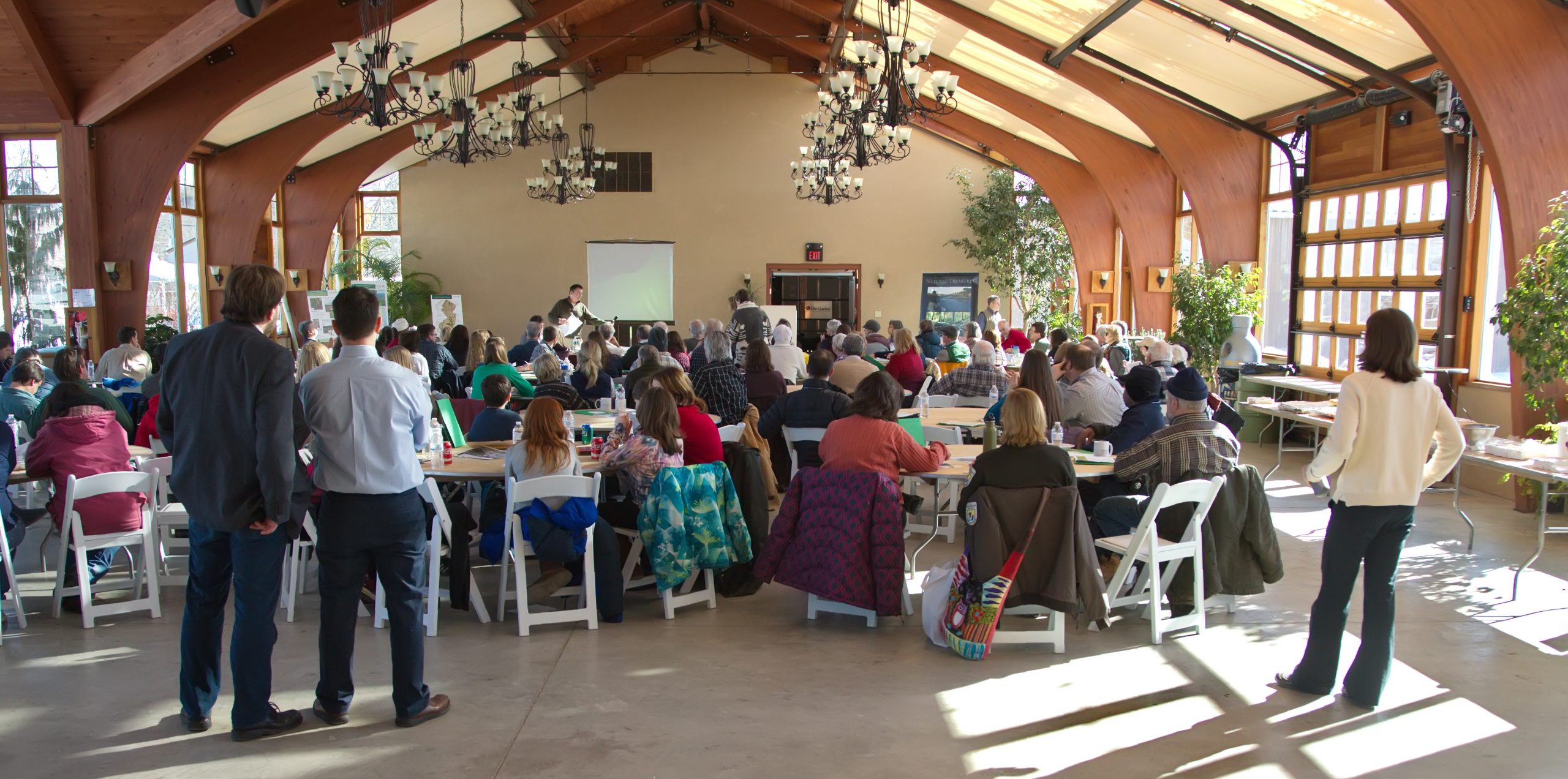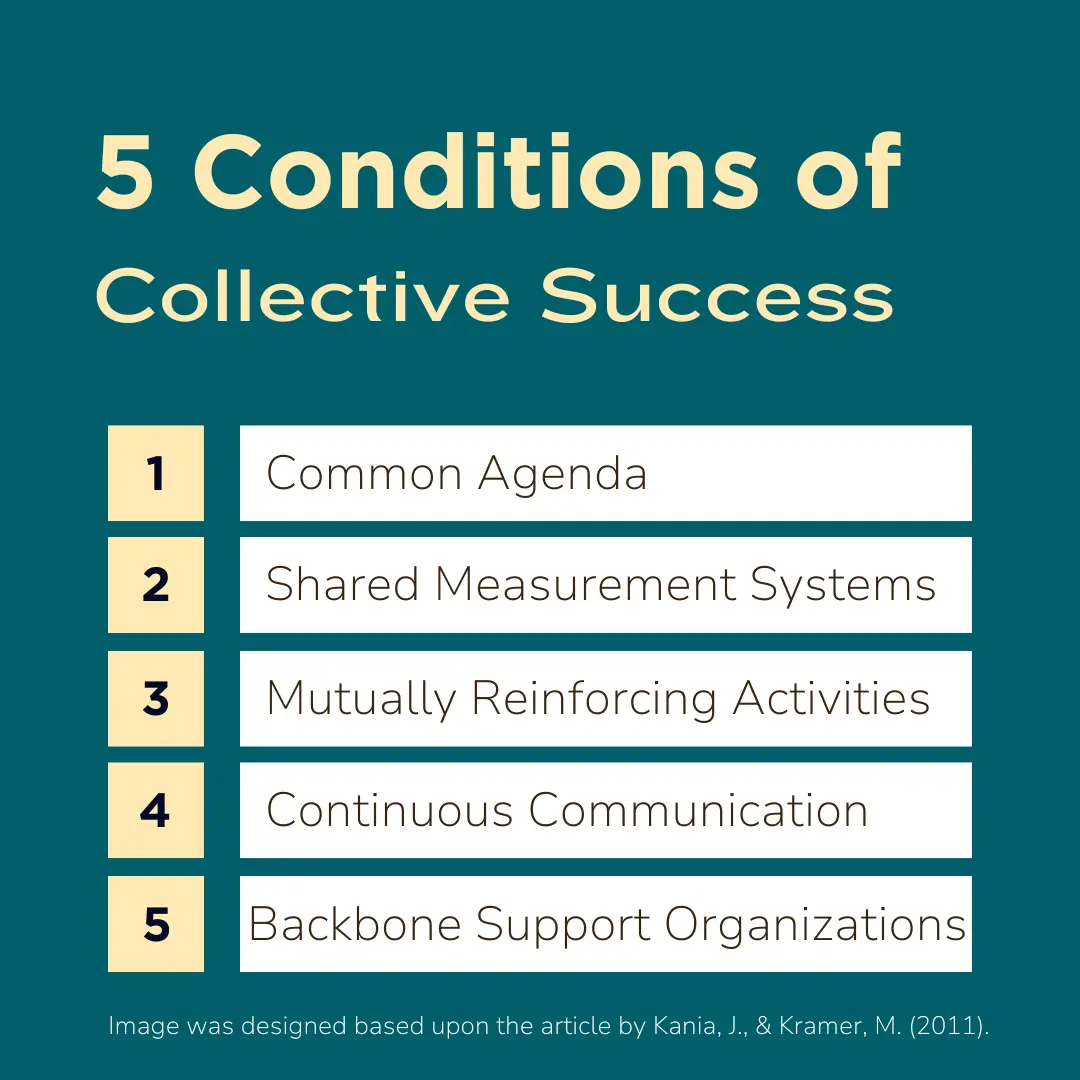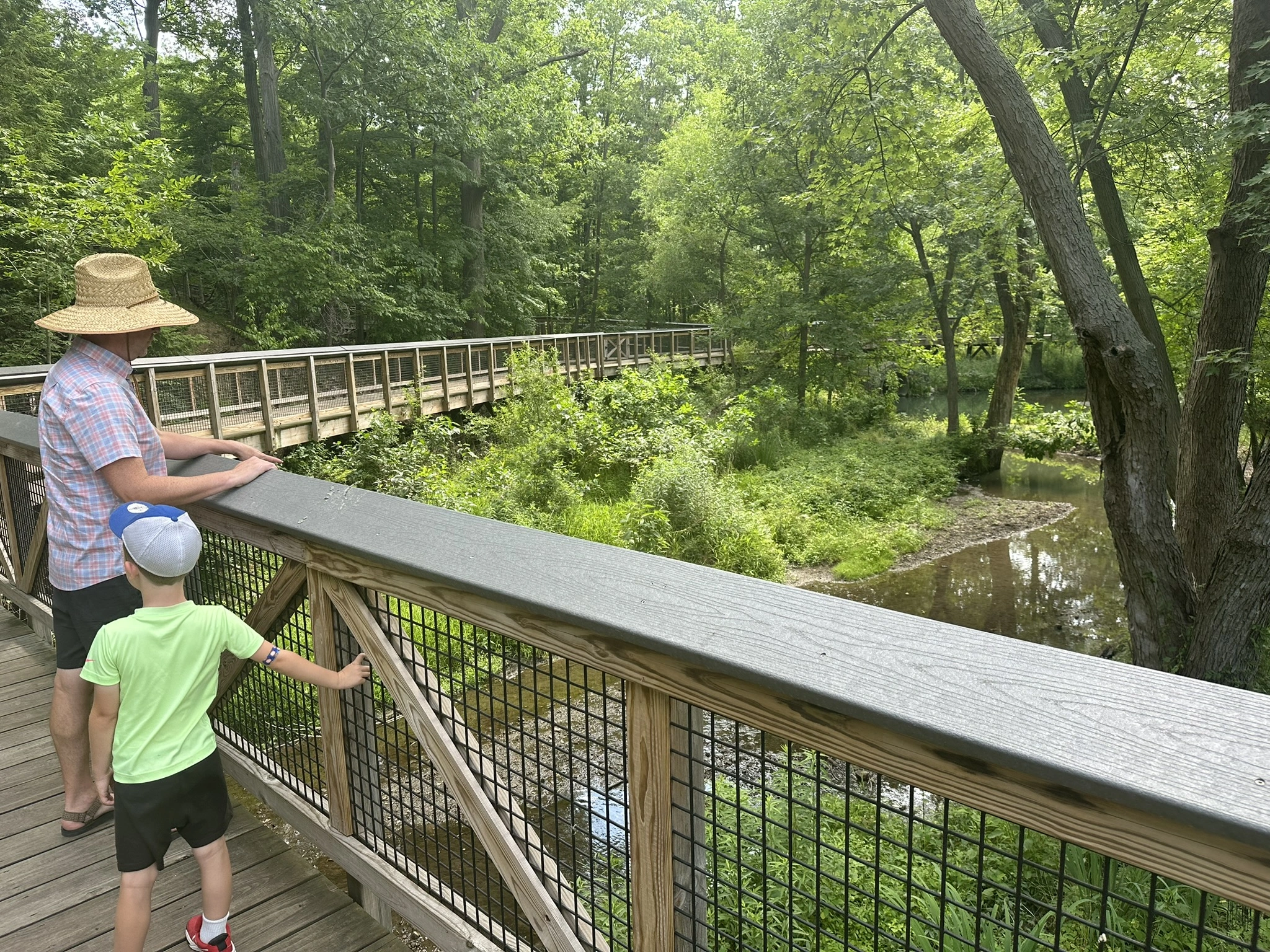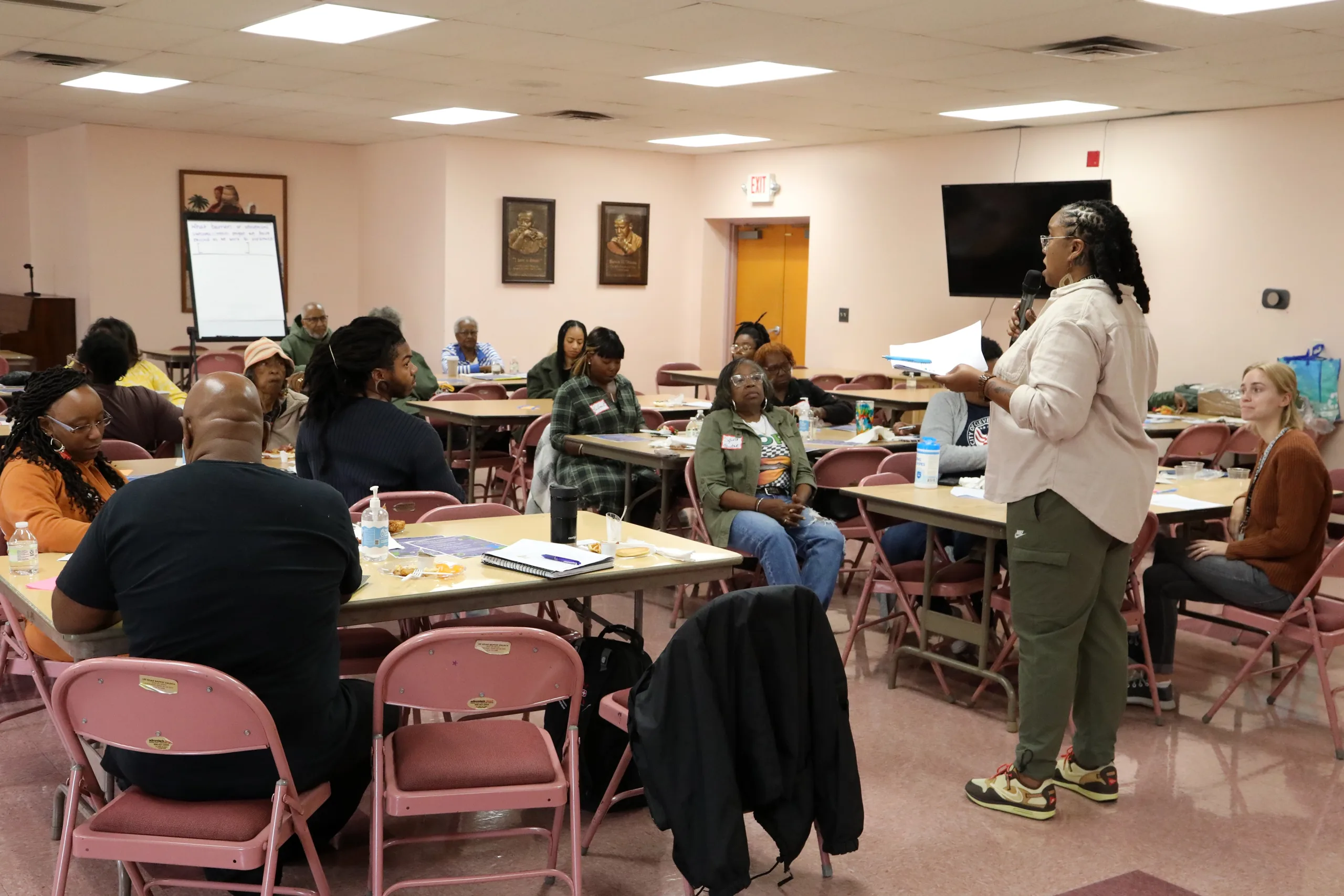
Photo: The Farms, Forests, and Rivers Workshop. (Credit: Damon Noe and The Nature Conservancy in New Jersey)
By Elizabeth Schuster, Environmental Economist
INTRODUCTION
It’s not uncommon to see a new coalition launched because a foundation chooses to support the work with dedicated funding. But what happens if your nonprofit isn’t able to access the support of a large foundation from day 1? In those cases, how can you get started?
First, it’s worth noting why many nonprofits first consider joining a coalition. Nonprofit leaders, do you ever get the sense that progress towards your org’s long-term goals is much slower than expected? Perhaps, you feel like it’s constantly one-off projects and they aren’t adding up to something bigger?
The solution may be pursuing new opportunities for collective impact. By collective impact, I’m referring to structured initiatives with multiple members, who represent diverse groups that may include nonprofits, government agencies, businesses, universities, etc.
Yet sometimes the perception is that collective impact work – like coalition building – is only for advocacy work.
Yes, it’s often advocacy that first inspires collective impact work. But true collective impact work is much broader than that.
- It’s acknowledging that the sum is bigger than the parts and working to scale your organizational impact through partnerships.
- It’s changing what leadership looks like, and defining what shared credit looks like.
- It’s shifting cultural expectations, elevating voices of others, and knowing that meaningful contributions to shared goals are as important as the lead name listed on a project.
WHAT IS COLLECTIVE IMPACT?
Authors John Kania and Mark Kramer’s 2011 article described collective impact so well that I’m sharing a summary of their 5 Conditions of Collective Success and a link to the original Stanford Social Innovation Review article here.
The authors note:
“The nonprofit sector most frequently operates using an approach that we call isolated impact. It is an approach oriented toward finding and funding a solution embodied within a single organization…
As a result of this process, nearly 1.4 million nonprofits try to invent independent solutions to major social problems, often working at odds with each other and exponentially increasing the perceived resources required to make meaningful progress.”
Plus, it’s worth your time to read the descriptions for each of the conditions from the article:
Common Agenda: “Collective impact requires all participants to have a shared vision for change, one that includes a common understanding of the problem and a joint approach to solving it through agreed upon actions.”
Shared Measurement Systems: “Collecting data and measuring results consistently on a short list of indicators at the community level and across all participating organizations ensures that all efforts remain aligned.”
Mutually Reinforcing Activities: “Collective impact initiatives depend on a diverse group of stakeholders working together, not by requiring that all participants do the same thing, but by encouraging each participant to undertake the specific set of activities at which it excels in a way that supports and is coordinated with the actions of others.”
Continuous Communication: “Participants need several years of regular meetings to build up enough experience with each other to recognize and appreciate the common motivation… They need time to see that their own interests will be treated fairly, and that decisions will be made on the basis of objective evidence and the best possible solution to the problem, not to favor the priorities of one organization over another.”
Backbone Support Organizations: “Creating and managing collective impact requires a separate organization and staff with a very specific set of skills to serve as the backbone for the entire initiative.”

7 TIPS & DIFFERENT WAYS TO GET STARTED
First, determine if your issue is something best solved by the collective impact model. Very complex, hard-to-solve social and environmental challenges are good candidates for collective impact solutions. I personally have worked with coalitions and collaboratives on food security, rural economic development and tourism, watershed health for nature and communities, urban forestry, resilient water supplies, and climate resilience, among others.
If your organization wants to actively advance your collective impact work, I’ve outlined tangible tips and different ways your nonprofit can get started. The idea is, you get started with a simplified structure supported by in-kind donations: e.g., staff time, meeting locations, marketing support. This early work can be expanded in the future once you have a designated funding source in hand.
Tip 1: Leverage federal funds for a different but related project to help build momentum.
I’ve seen this work with FEMA emergency funds after a major flood event or National Oceanic and Atmospheric Administration funds for a large, collaborative climate resilience project. In both cases, the initial project funds were leveraged to build momentum around longer-term coalition work.
Tip 2: Build community around an event, like a conference, to start a small, simple committee or collaborative.
If you constantly see the same partners working on similar issues at a given conference, then the community already exists. It’s just a matter of starting to give that community some structure that lasts year-round, not just during the conference.
Tip 3: Find a nonprofit or government agency that is willing to step up and temporarily donate time to be the backbone organization while the partners look for a more sustainable funding source.
Some organizations have “convening partners” (or some version of that) in their strategic plan. If you can find the right organization, temporarily serving as a backbone organization may indeed align with their organizational goals and be a good fit.
Tip 4: Tap into an existing structure or national group to start.
Here I’m thinking about a recent example, based upon a conversation I had with a colleague. She and I are both interested in supporting backyard habitat and native landscaping in our community. It turns out there are national organizations with local chapters that we could tap into to help scale our efforts and have collective impact.
Tip 5: Take advantage of a relevant, timely policy issues that already brought together private businesses, nonprofits, universities, and other diverse partners.
Sometimes we’ll see a policy issue or ballot measure that is so timely that it must be pursued, with or without funding. Partner organizations will temporarily rally together around this urgent issue. Take advantage of that momentum and create an ad hoc working group or committee to help the partners continue to work together moving forward.
Tip 6: Find a university partner to launch the work.
If the timing is right, you may find a university partner that is launching a new center or looking for the next great idea. Universities are natural conveners and often can successfully bring together diverse partners. An example is the Sustainable Raritan River Initiative which is housed at Rutgers University in New Brunswick, NJ and brings together 7 counties, 98 municipalities, utility companies, the private sector, government agencies, university researchers, and nonprofits.
Tip 7: Set goals, even if you start with an ad hoc working groups.
I think we can all agree that it’s impossible to complete a full, collaborative and inclusive strategic planning process with no budget. But if you don’t have any formal goals to get started, then the new working group will flounder with no direction. I’ve had a good amount of success in these cases with a heavily abridged planning process, typically just a handful of 2-hour meetings. It’s worth the time to sketch out some initial, written goals to guide the direction of your group. This can tide you over until your working group grows and gets funding to do a more comprehensive planning process.
CONCLUSION
I’m not encouraging you to be naïve about the full level of resources that it takes to have successful collective impact work. Rather, I’m encouraging your nonprofit to consider this as a long-term investment. Keep the initial coalition structure simple, with monthly meetings to support good communication. While in-kind services are necessary in this early stage, I don’t want to encourage anyone to overcommit or burn out with the workload. The intent is that that the work is divided among enough members that it isn’t a disproportionate burden on any single member organization.
The value of this early phase of coalition building is it helps build relationships. It allows your coalition to start to articulate shared goals. When designed well and focused on solving a specific problem, these coalition committee meetings can be productive, especially when there is a good agenda for each meeting. And then after a year, or two, or however long it takes of building trust and relationships, you have set your coalition up for success and your team will be ready when the funding opportunity does present itself.





